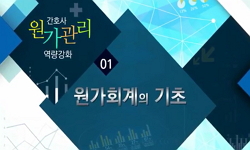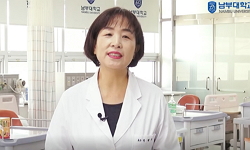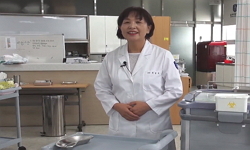This paper traces the growth of student nurses and graduate nurses at the Nurses’ Training school of Po Ku Nyo Kwan, the first nurses’ training school in Korea. Specifically, these nurses grew as professional women by participating in, and hosting...
http://chineseinput.net/에서 pinyin(병음)방식으로 중국어를 변환할 수 있습니다.
변환된 중국어를 복사하여 사용하시면 됩니다.
- 中文 을 입력하시려면 zhongwen을 입력하시고 space를누르시면됩니다.
- 北京 을 입력하시려면 beijing을 입력하시고 space를 누르시면 됩니다.

보구여관간호원양성소 간호원들의 근대 경험과 역량 증진 = Modern Experience and the Promotion of Competence at the Nurses in Nurses’ Training School of Po Ku Nyo Kwan
한글로보기https://www.riss.kr/link?id=A107791875
- 저자
- 발행기관
- 학술지명
- 권호사항
-
발행연도
2021
-
작성언어
-
- 주제어
-
등재정보
KCI등재
-
자료형태
학술저널
-
수록면
163-199(37쪽)
- DOI식별코드
- 제공처
-
0
상세조회 -
0
다운로드
부가정보
다국어 초록 (Multilingual Abstract)
Student nurses at the Nurses’ Training school of Po Ku Nyo Kwan grew into experts in the unfamiliar field of “nursing” throughout the curriculum. In addition to nursing outpatients, inpatients, and out-call patients at Po Ku Nyo Kwan, students also served as visiting nurses at foreigners’ and Koreans’ homes and missionary hospitals across the country, including Severance Hospital. Student nurses at Po Ku Nyo Kwan actively participated in the social events, tours of Japanese hospitals, and year-end and New Year's events. They also cared for wounded soldiers during the disbandment of the Korean Armed Forces by Japan in 1907. After graduation, these nurses worked at Po Ku Nyo Kwan in Seoul, Koang Hyoe Nyo Won in Pyengyang, and the Seoul nursing home for foreigners as chief nurses or in nurses’ training schools (including Po Ku Nyo Kwan) as teachers or superintendents. It is exceptional that Lee Grace served a nurse as well as a physician after obtaining her ‘Uisaeng (醫生)’ license on May 27, 1914.
Moreover, nurses at Po Ku Nyo Kwan organized the Severance Hospital Nurses’ Association in June 1910 with students at the Nurses’ Training School of Severance Hospital, who shared their experiences and perceptions through close interaction; the association conducted various activities to foster nurses’ qualities and abilities. Subsequently, in June 1911, graduate nurses from the two nurses’ training schools gathered to form the Severance Hospital Nurses’ Alumnae Association.
Thus, nurses at the Nurses’ Training School of Po Ku Nyo Kwan promoted their capabilities through “modern experiences” both on and off campus that were not able to ordinary women at the time. As such, they were at the center of treating women’s health, both mental and physical, by performing their capabilities in the space where they were needed.
This paper traces the growth of student nurses and graduate nurses at the Nurses’ Training school of Po Ku Nyo Kwan, the first nurses’ training school in Korea. Specifically, these nurses grew as professional women by participating in, and hosting curriculum, nursing, and other events in addition to forming organizations. This research focuses on identifying the meaning of these activities at the Nurses’ Training School of Po Ku Nyo Kwan from the perspectives of both women and medical professionals. The research period was limited to about ten years from the establishment of the Nurses’ Training School of Po Ku Nyo Kwan in 1903 to its relocation to Dongdaemun (the East Gate) in 1912.
Student nurses at the Nurses’ Training school of Po Ku Nyo Kwan grew into experts in the unfamiliar field of “nursing” throughout the curriculum. In addition to nursing outpatients, inpatients, and out-call patients at Po Ku Nyo Kwan, students also served as visiting nurses at foreigners’ and Koreans’ homes and missionary hospitals across the country, including Severance Hospital. Student nurses at Po Ku Nyo Kwan actively participated in the social events, tours of Japanese hospitals, and year-end and New Year's events. They also cared for wounded soldiers during the disbandment of the Korean Armed Forces by Japan in 1907. After graduation, these nurses worked at Po Ku Nyo Kwan in Seoul, Koang Hyoe Nyo Won in Pyengyang, and the Seoul nursing home for foreigners as chief nurses or in nurses’ training schools (including Po Ku Nyo Kwan) as teachers or superintendents. It is exceptional that Lee Grace served a nurse as well as a physician after obtaining her ‘Uisaeng (醫生)’ license on May 27, 1914.
Moreover, nurses at Po Ku Nyo Kwan organized the Severance Hospital Nurses’ Association in June 1910 with students at the Nurses’ Training School of Severance Hospital, who shared their experiences and perceptions through close interaction; the association conducted various activities to foster nurses’ qualities and abilities. Subsequently, in June 1911, graduate nurses from the two nurses’ training schools gathered to form the Severance Hospital Nurses’ Alumnae Association.
Thus, nurses at the Nurses’ Training School of Po Ku Nyo Kwan promoted their capabilities through “modern experiences” both on and off campus that were not able to ordinary women at the time. As such, they were at the center of treating women’s health, both mental and physical, by performing their capabilities in the space where they were needed.
동일학술지(권/호) 다른 논문
-
‘버려진 돌’에서 ‘모퉁이 돌’로 ― 한국의 박에스더(金點童, 1877~1910)와 중국의 캉청(康成, 1873~1930) 비교 ―
- 이화여자대학교 이화사학연구소
- 공혜정 ( Kong Hyejung Grace )
- 2021
- KCI등재
-
해외여선교회(WFMS)의 서울지역 의료사업 - 동대문 부인병원을 중심으로 -
- 이화여자대학교 이화사학연구소
- 김영수 ( Youngsoo Kim )
- 2021
- KCI등재
-
- 이화여자대학교 이화사학연구소
- 임영애 ( Lim Young-ae )
- 2021
- KCI등재
-
한국전쟁기 미군이 노획한 ‘북한노획문서’의 구성과 특징
- 이화여자대학교 이화사학연구소
- 정병준 ( Jung Byung Joon )
- 2021
- KCI등재




 KCI
KCI KISS
KISS






